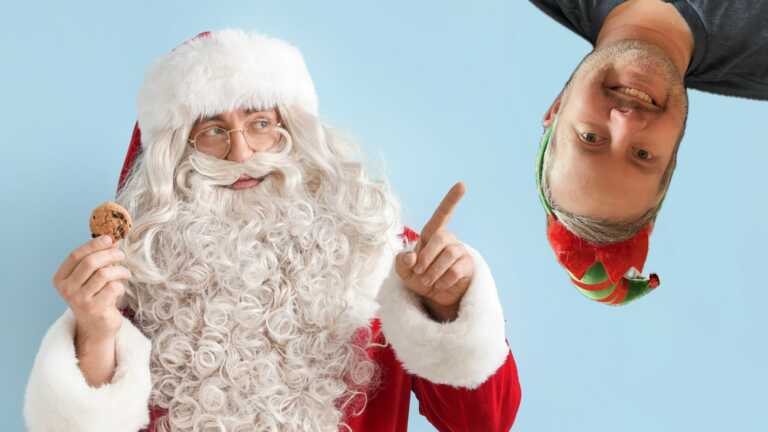“You’ve done this before?,” asks the CT Technologist.
I nod, making a classic white-people-making-eye-contact-by-mistake face.
You know the one:

The spiel begins.
“So, you remember the contrast is going to make you feel warm and like you’ve wet yourself?”
“It’s been decades since I’ve pissed myself,” I joke, “but I remember what the contrast feels like.”
“Not a drinker, then?,” the tech banters back.
Ah. This guy.
“I’d rather do this than a colonography,” I share.
“We usually get the butt-stuff out of the way early in the morning.”
“Weird. That seems like more of an after dinner affair,” I rebuke.
More cheeky banter. Maybe one of the more entertaining parts of being a young cancer patient.
A few more questions—plus a comment on my awesome lime/grey Chuck Taylors—and I’m sitting on the scan table, dropping my jeans so we can get some nice images of my chest, abdomen, and pelvis.
A CT scan comprises many images. In my case: 865.
Good luck interpreting those yourself.
It’s my one-year follow-up scan. It’s two days shy of the anniversary of my first ever oncology appointment, which is reassuring because it means surveillance is happening when it should.
A weird way to spend a Sunday night. It’s a fasting scan, so as good an excuse as any to eat way too much Taco Bell afterwards. Fasting is annoying.
Plus, Sunday night means I don’t have to miss work (not that they would mind). This is part of survivor’s guilt: it sucks to be other.
Am I survivor? Am I a patient? Who even knows at this point.
Watch and wait, then wait and watch
Surveillance is often called watch and wait because that’s exactly the intent.
We watch suspect areas for recurrence at specific intervals and wait until cancer either rears its head again, or decides that it hated chemotherapy enough to fuck all the way off forever.
In Cancerland, we know these as restaging scans. There are a few possible outcomes:
- Nothing changes. Congratulations! You still have Stage IIIC cancer, but are showing no evidence of disease. Things are stable. If this keeps up for four more years, you’ll be declared cancer free and maybe be able to get life insurance again!
- Something changes. Ah, fuck. More tests. Maybe you have incurable, metastatic cancer. Maybe you don’t.
Once the scans are completed, you get to wait and watch (your inbox) for the results.
Something changes…
My phone rings on Wednesday afternoon. It’s about two days after my scan.
Unknown Caller flashes across the screen.
It’s either my oncologist calling with results or someone offering to clean my ducts again.
It’s the former:
“I’m calling because I received your CT scan results and wanted to let you know that I’ve put in a requisition for an urgent MRI. I don’t want to waste any time here. There are new lesions on your liver. They aren’t quite like the ones we ruled as benign, but we also can’t confirm from the CT alone whether it’s metastatic disease.”
Fuck. Not this again. Fatty liver disease always makes my liver suspect. The tone is different this time. My oncologist thinks these are different. Will I get lucky for a change and have it be nothing?
We go into some details around the new growths, which are 1.4cm and 1.7cm, respectively.
They weren’t there eight months ago, when I had my last CT and MRI. They popped up during treatment.
Those seem to have grown fast. And while I was on chemo, too?
“I’m amenable to a biopsy if it can rule metastasis in or out,” I reply, setting the expectation that I want to know for sure.
“We’ll find out through the MRI if the lesions can be biopsied but the MRI may tell the whole story. It might be unneccessary for you to have a biopsy.”
I’d love to not have a liver biopsy. I’ve heard they’re pretty uncomfortable. I also know a few people who’ve had a lung knicked. Bad times.
…but I don’t know definitively what, yet
The point of this post isn’t to stoke the fires of speculation, even though the visualizations may lead there.
It’s more to illustrate the degree of uncertainty and how it creeps into everyday life as part of survivorship.
The content of my last week was, by most people’s standards, probably pretty normal.
I went to work.
I completed a course for a certificate program I’m taking.
I spent four hours or so volunteering.
I got groceries and had the winter tires swapped off the car.
I went to the pub for a cheeky, rainy-day pint with Shannon. I went for another cheeky pint with Shannon and some friends.
I bought some jeans.
All normal activities, but all coloured by the possibility that I have been failed by my cancer treatment.
It’s extremely difficult to compartmentalize.
The mundanity of life continues, contrasted against the threat of terminal disease.
The devil is perched on my shoulder, stalwart like a gargoyle in a hurricane, a silent witness to the chaos unfolding all around.
Cancer care is guided by a series of flowcharts, each offering a different set of options related to treatment. If X, then Y.
My MRI will likely lead to one of three outcomes:
- The liver lesions are nothing. Best case scenario, this is a scare. No action required. I continue with watch and wait protocol.
- The liver lesions are cancerous, but resectable. I’ll have surgery to cut the cancer out, followed by more chemotherapy, radiotherapy, or both. It’s still treatment with curative intent.
- The liver lesions are non-resectable. No surgery. Chemo for life. This would be life prolonging care and not life saving care (although, in rare circumstances, the cancer is cured).
…and so, I wait.
What’s next?
I don’t know anything about the cancer shit, but I can speak to everything else.
I’m doing some fundraising for Colorectal Cancer Canada’s walkathon this summer: Push for Your Tush. If you’re in or around Ottawa and want to join, let me know!
Additionally, I’m involved with the Colorectal Cancer Canada Community Conference in mid-May as a co-chair and panelist.
Work also continues with the Queen’s Cancer Research Institute’s Patient Engagement Network and the Patient and Family Advisory Council for the Southeastern Regional Cancer Program.
I’m co-authoring two research studies now: one studies the (poor) survival outcome of very young (<40) colorectal cancer patients. The other focuses on access and equity of care among rural Canadian cancer patients.
Facilitating peer chats remains pretty up there on my priority list, so I continue to host two a month with Young Adult Cancer Canada.
Lastly, I’m finishing up a certificate program in Product Management from Cornell, which is extremely interesting. Three courses down. Three to go.
I’ll probably slow down a bit for the summer.
Time will tell.








